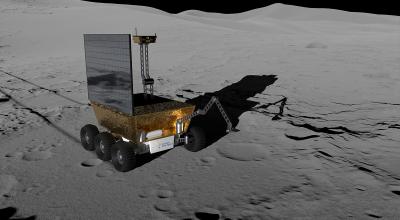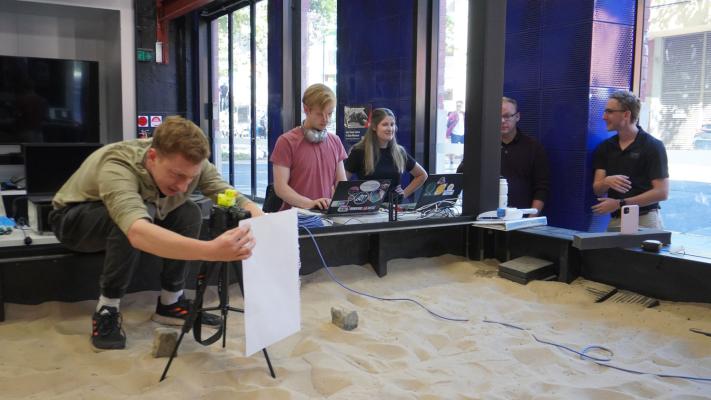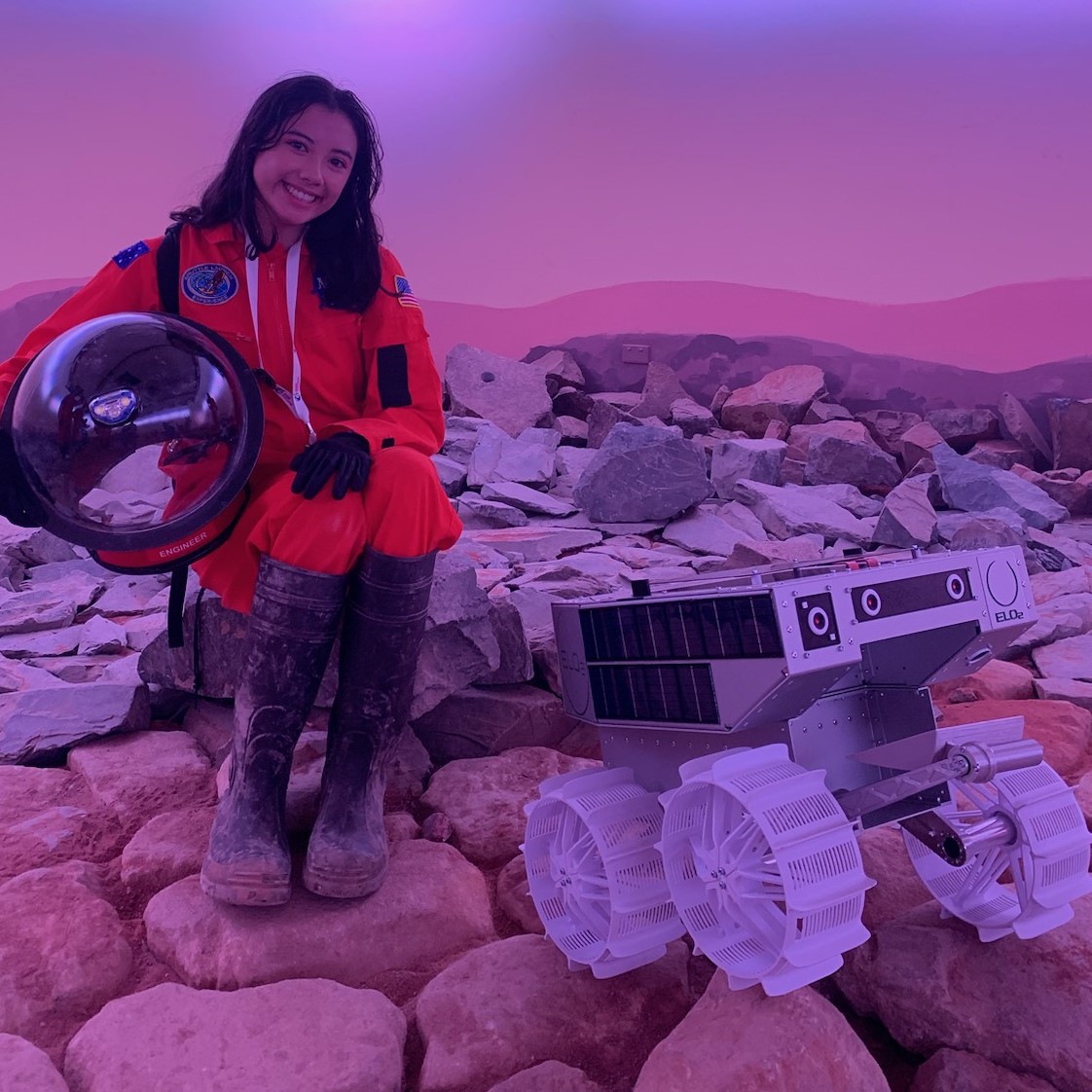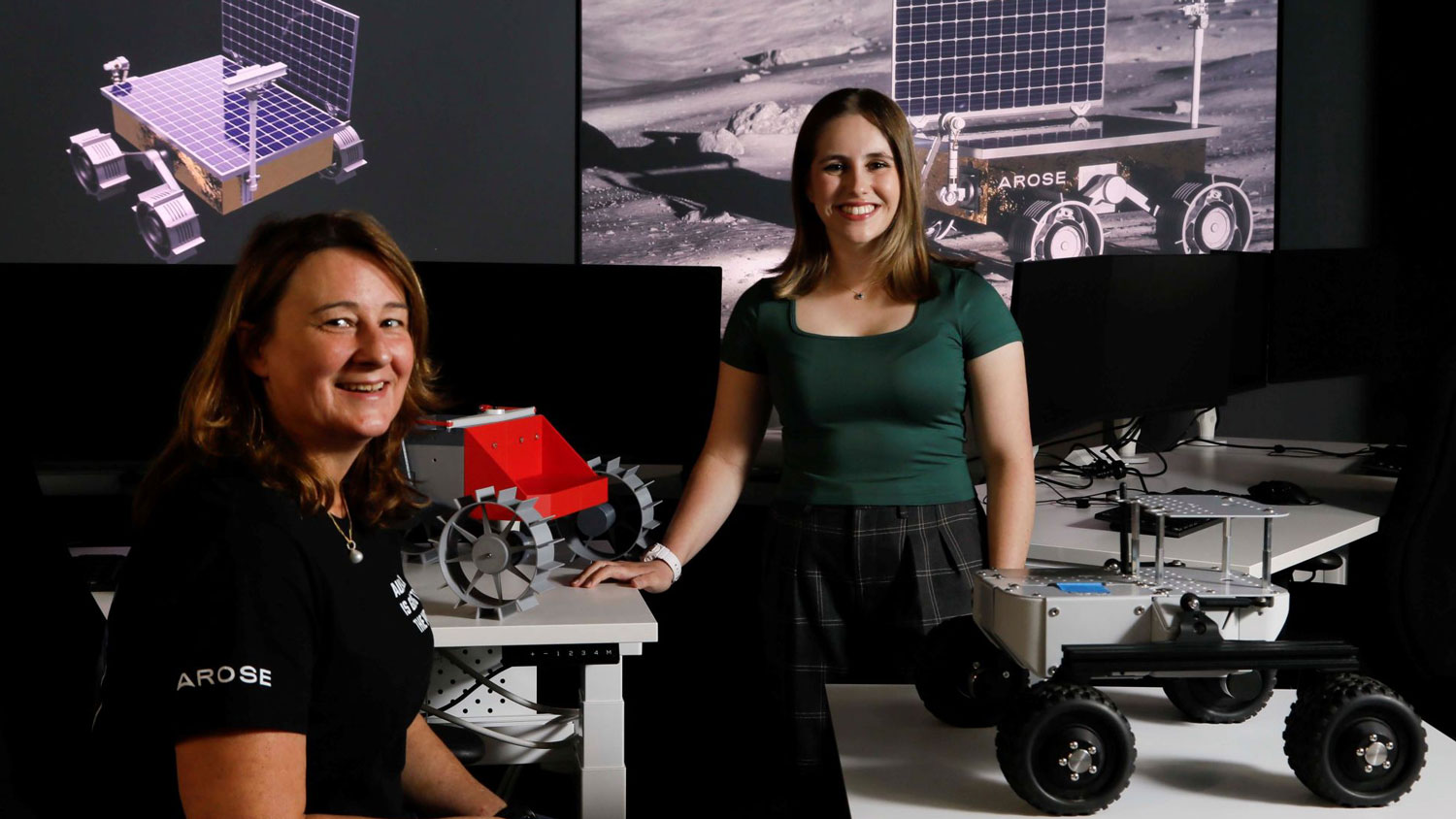As Australia’s first lunar rover begins a new chapter in our national space history, it also represents the beginning of a career journey for many young people involved in building it.
Both the AROSE and ELO2 teams developing prototype lunar rovers for the Australian Space Agency’s Trailblazer program have drawn from the nation’s growing pool of young STEM talents eager to get into the space sector.
And the next generation isn’t just there to shadow the veterans on the job – these young professionals are making their own important contributions to this piece of Australian space history.
One of them is Chloe Chang, who joined the ELO2 consortium co-lead Lunar Outpost Oceania as a mechanical engineer after studying at Monash University.
Chloe led the university’s Nova Rover robotics competition team to second place worldwide – and she also interned at CSIRO, where she helped scientists automate time-consuming tasks like sample pipetting.
“Working on the Trailblazer project has been transformative for me, and the most amazing opportunity… every day on this project has taught me something new,” Chloe says.
“My role involves working on the structural design of the rover, and ensuring it can withstand the harsh environment in space and on the Moon – which includes thermal, vacuum, dust, radiation, shock, and vibrations.”
“A large part of my work centres around computer-aided design (CAD), where I translate theoretical concepts into physical components that will eventually go to space… it’s been fascinating to balance creativity and engineering precision.”
Alongside exploring further into the solar system, and making the space industry more accessible to everyone – especially women – Chloe is excited that Trailblazer aligns with her career goal of helping transfer technology benefits between space and Earth.
“Space is the ultimate testing ground, with harsh environments and limited infrastructure, and the innovations we create to solve those challenges can have a huge impact on solving problems here,” she says.
“The experience of working with a rover destined for the Moon has only deepened my passion for using space exploration as a catalyst for change here on Earth… it’s given me firsthand experience in how to build systems that can survive and thrive in extreme environments, which is critical for both space exploration and addressing global challenges.”
Chloe’s colleague Sam Cleary landed his role a mechatronics engineer with ELO2 after working as an undergraduate with ELO2 consortium co-lead EPE Oceania.
The Trailblazer program funding from the Australian Space Agency enabled Sam to secure full-time graduate employment after he finished studying.
“I’ve supported the test and evaluation of the rover prototypes – my primary role involves collaborating with the team to ensure the rover's systems meet the required specifications,” Sam says.
“I’ve also facilitated prototype testing at dedicated test and evaluation (T&E) facilities, setting up simulated lunar terrain and lighting conditions to replicate the environment the rover will face.”
Like Chloe, Sam is interested in the parallels between technology in space and on Earth, and sees Trailblazer as a valuable step towards one day taking a leadership role on a similar project.
“The challenges we face on the lunar surface – such as extreme temperatures and radiation – are parallel to issues encountered in terrestrial applications, like disaster response and the exploration of remote or dangerous areas,” Sam says.
“The Trailblazer project has strengthened my problem-solving skills in designing resilient and autonomous systems that can operate effectively in harsh conditions, and enhanced my ability to develop robotic solutions for extreme environments both in space and on Earth.”
“My long-term career goal is to manage the Technical Directors or Program Managers who oversee large-scale projects… Trailblazer has given me a deeper appreciation for the growing field of space robotics, and the vast opportunities emerging within the industry.”
Across the ELO2 consortium, the majority of the 25 full-time-equivalent jobs created directly through Trailblazer program are early-career roles, with close to half awarded to new graduates.
The ELO2 consortium has also created 13 internships for STEM undergraduates and graduates, and conducted a suite of educational outreach activities – such as the ‘Little Dipper Challenge’, inviting school children to build a lunar rover scoop with household materials.
At the AROSE consortium, Lorian Marshall was still a teenager when she was recruited in her final year of undergraduate mechanical engineering and synthetic chemistry studies.
She had already gained some industry experience as a student engineer working on nanosatellite technology with Curtin University’s Binar Space Program before joining the Trailblazer team.
In her role as an engineering intern with AROSE consortium co-lead Fugro, she’s designed a context imaging system to help the AROSE rover prototype interact with the lunar surface and the samples of lunar soil it’s handling.
“Working on Australia's first lunar rover project has been an incredible opportunity for my professional development… I've had the chance to immerse myself in a diverse team with years of experience in the space industry,” Lorian says.
“I’ve been able to experience first-hand how systems engineering can help me to think critically, and see the collaboration across disciplines and industries… this mindset has already assisted me in my university studies, and has motivated me to chase after new opportunities to engage in the space industry.”
“Engineering for an extreme environment like the lunar surface taught me to trust in my team and question everything, even my basic assumptions – even gravity.”
While Lorian is still figuring out her long-term career path, she says Trailblazer has helped confirm her interest in working as a spacecraft engineer on frontier space missions into the future.
“I love that no mission is the same in space… you can have the same inputs and get vastly different spacecraft designs, and try new ideas that no one has considered before,” she says.
“Being an engineer on Trailblazer gives me one foot in the door to explore connections not only in Australia, but internationally.”
Lorian’s colleague Nadia Sarunic also came to AROSE after tasting the satellite sector – in her case, working on the South Australian Kanyini nanosatellite as a graduate systems engineer with Nova Systems, the other AROSE consortium co-lead.
Nadia’s role as a Trailblazer systems engineer with Nova Systems sees her contribute to the mission assurance process – including plans, procedures, and design documents for project milestone reviews – and liaise with a wide range of people on the project.
“The AROSE team is super diverse, with many experts in their field; collectively our team has already contributed to 95 different space missions,” Nadia says.
“It’s a privilege working with and learning from some very smart people… I am learning a lot more about space, and about how the technology we are good at developing on Earth can be leveraged for space.”
“I have also been given the opportunity to go to space events and talk to others in the industry about the project – and I have even delivered a school outreach workshop to primary school students on space.”
Like its counterpart ELO2, the AROSE consortium has conducted educational activities to inspire future generations of space professionals – including school visits such as Nadia’s, and the ‘Roving Around’ mission for school students to design solutions to real-world space industry challenges.
As she pursues her own space career ambitions, Nadia hopes Australia’s first lunar rover will create more opportunities for people to follow in her footsteps, and those of the other young professionals on the Trailblazer program.
“I would love to continue to learn more about designing systems for harsh environments, and space is the perfect place to do this,” Nadia says.
“The Trailblazer project is so important for the Australian space industry, and I am so excited to be a part of it… out of this I hope that many more space careers become available for future space engineers like me.”

Meet Roo-ver
Roo-ver is the name of our Australian designed and developed rover that will go to the Moon with NASA.



